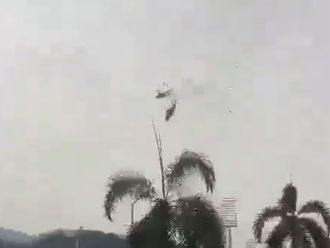Dozens of warships believed to contain the remains of thousands of British, American, Australian, Dutch and Japanese servicemen from the Second World War have been illegally ripped apart by salvage divers. An analysis of ships discovered by wreck divers and naval historians has found that up to 40 second world war-era vessels have already been partially or completely destroyed. Their hulls might have contained the corpses of 4,500 crew.
Governments fear other unmarked graves are at risk of being desecrated. Hundreds more ships — mostly Japanese vessels that could contain the war graves of tens of thousands of crew killed during the war — remain on the seabed.
Precious treasures
The rusted 70-year-old wrecks are usually sold as scrap but the ships also contain valuable metals such as copper cables and phosphor bronze propellers. Experts said grave diggers might be looking for even more precious treasures — steel plating made before the nuclear testing era, which filled the atmosphere with radiation. These submerged ships are one of the last sources of “low background steel”, virtually radiation-free and vital for some scientific and medical equipment.
The Guardian reported last year that the wrecks of some of Britain’s most celebrated warships had been illegally salvaged, leading to uproar among veterans and archaeologists, who accused the UK government of not moving fast enough to protect underwater graves.
Three ships — HMS Exeter, HMS Encounter, and HMS Electra — contained the bodies of more than 150 sailors. All sank during operations in the Java Sea in 1942, one of the costliest sea skirmishes for the Allies during the war. In 2014, the wrecks of the HMS Repulse and HMS Prince of Wales and the graves for more than 800 Royal Navy sailors were found to have been damaged by scavengers.
Ripped up
The UK’s Ministry of Defence demanded Indonesia protect the ships in its waters. “A military wreck should remain undisturbed and those who lost their lives on-board should be allowed to rest in peace,” a ministry spokesperson said.
Since then, divers in Malaysia have sent photos to reporters showing the destruction of three Japanese ships that sank off the coast of Borneo in 1944 during the Pacific War. And one of Australia’s most treasured ships, light cruiser HMAS Perth, has also been ripped up.
Dan Tehan, Australia’s minister for veterans’ affairs, told the Guardian: “The HMAS Perth is the final resting place for more than 350 Australians who lost their lives defending Australia’s values and freedoms, so reports the wreckage has been disturbed are deeply upsetting and of great concern.”
James Hunter, from the Australian National Maritime Museum, was one of the divers who discovered the Perth was “60 to 70 per cent gone”. Born in the mid-western US, he had been diving with his father since he was nine and worked as a maritime archeologist for close to two decades, including on the archaeological team that investigated the American civil war submarine H L Hunley.
Throughout his career, Hunter had heard of piecemeal salvaging of wrecks — stealing propellers and guns, or sometimes personal items of the crew. But last year, the museum heard stories from the diving community in Indonesia that ships were being destroyed whole-scale.
“I’ve been in this field for 20 years, and I have never heard of a historic wreck, especially a large 8,000-tonne steel hull, being completely removed. I couldn’t believe it. I almost refused to believe it,” he said.
But a month later, staring through the silty water in the Java Sea, Hunter saw how the salvagers had “ripped [the Perth] from one end to the other”. The US military has sent several delegations to Indonesia to try to protect its wrecks, several of which have been targeted.
Thousands of sailors rest at the bottom of the sea, and veterans argue that the vessels must be preserved as underwater war graves. Cambodian, Chinese and Malaysian-registered vessels have been spotted above shipwrecks. In some cases, their crews have been arrested. In one case, the looters had acquired a letter from a Malaysian university which said the work was authorised as “research”.
— Guardian News & Media Ltd












